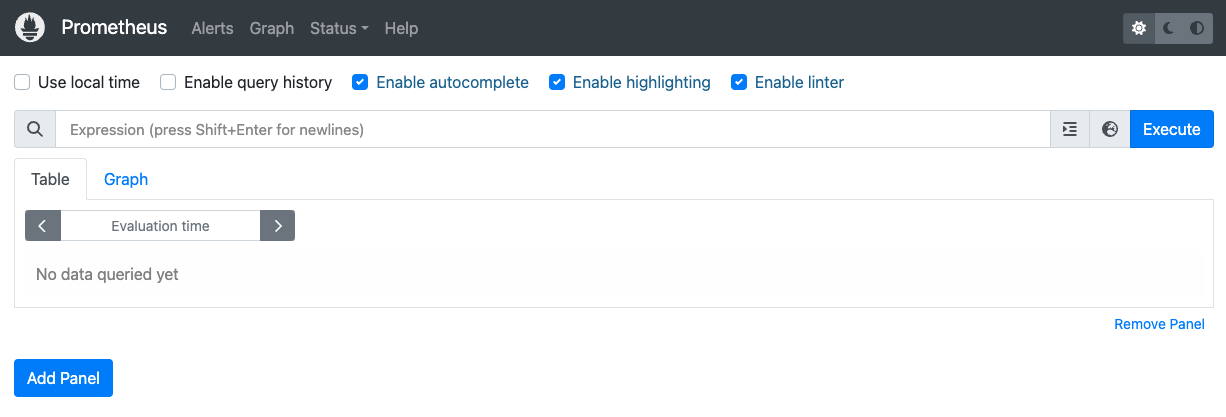本教程使用 Kueue 介绍如何实现 Job 排队系统、配置 Google Kubernetes Engine (GKE) 上不同命名空间之间的工作负载资源和配额共享,以及如何最大限度地提高集群的利用率。
背景
作为基础架构工程师或集群管理员,最大限度地提高命名空间之间的利用率至关重要。一个命名空间中的一批 Job 可能无法充分使用分配给该命名空间的全部配额,而另一个命名空间可能有多个待处理的 Job。如需在不同命名空间的 Job 之间高效地使用集群资源,并提高配额管理的灵活性,您可以在 Kueue 中配置同类群组。同类群组是一组 ClusterQueue,它们可以相互借用未使用的配额。ClusterQueue 用于管理 CPU、内存和硬件加速器等资源池。
您可以参阅 Kueue 文档,了解所有这些概念的详细定义。
创建 ResourceFlavor
ResourceFlavor 表示集群节点中的资源变体,例如不同的虚拟机(例如 Spot 与按需)、架构(例如 x86 与 ARM CPU)、品牌和型号(例如 Nvidia A100 与 T4 GPU)。
ResourceFlavors 使用节点标签和污点与集群中的一组节点匹配。
在此清单中:
- ResourceFlavor
on-demand的标签设置为cloud.google.com/gke-provisioning: standard。 - ResourceFlavor
spot的标签设置为cloud.google.com/gke-provisioning: spot。
为工作负载分配 ResourceFlavor 时,Kueue 会将工作负载的 Pod 分配给匹配为 ResourceFlavor 定义的节点标签的节点。
部署 ResourceFlavor:
kubectl apply -f flavors.yaml
创建 ClusterQueue 和 LocalQueue
创建两个 ClusterQueue cq-team-a 和 cq-team-b,以及相应的 LocalQueue lq-team-a 和 lq-team-b,分别加入命名空间 team-a 和 team-b。
ClusterQueue 是集群范围对象,用于管理 CPU、内存和硬件加速器等资源池。批处理管理员可以将这些对象的公开范围限制为批处理用户。
LocalQueue 是批处理用户可以列出的命名空间内对象。它们指向 CluterQueue,资源将从中分配,以运行 LocalQueue 工作负载。
ClusterQueue 允许资源有多个变体。在本例中,每个 ClusterQueue 都有两种变体(on-demand 和 spot),均提供 cpu 资源。ResourceFlavor spot 的配额设置为 0,暂时不使用。
这两个 ClusterQueue 共享在 .spec.cohort 中定义的名为 all-teams 的同类群组。当两个或更多 ClusterQueue 共享一个同类群组时,它们可以向彼此借用未使用的配额。
如需详细了解同类群组的工作原理以及借用语义,请参阅 Kueue 文档。
部署 ClusterQueue 和 LocalQueue:
kubectl apply -f cq-team-a.yaml
kubectl apply -f cq-team-b.yaml
(可选)使用 kube-prometheus 监控工作负载
您可以使用 Prometheus 监控 Kueue 活跃工作负载和待处理工作负载。如需监控启动的工作负载并观察每个 ClusterQueue 的负载,请将 kube-prometheus 部署到命名空间 monitoring 下的集群:
下载 Prometheus Operator 的源代码:
cd git clone https://github.com/prometheus-operator/kube-prometheus.git创建 CustomResourceDefinition (CRD):
kubectl create -f kube-prometheus/manifests/setup创建监控组件:
kubectl create -f kube-prometheus/manifests允许
prometheus-operator从 Kueue 组件中抓取指标:kubectl apply -f https://github.com/kubernetes-sigs/kueue/releases/download/$VERSION/prometheus.yaml切换到工作目录:
cd kubernetes-engine-samples/batch/kueue-cohort将端口转发设置为在 GKE 集群中运行的 Prometheus 服务:
kubectl --namespace monitoring port-forward svc/prometheus-k8s 9090在浏览器中通过 localhost:9090 打开 Prometheus 网页界面。
在 Cloud Shell 中:
点击网页预览。
点击更改端口,然后将端口号设置为
9090。点击更改并预览。
系统随即会显示以下 Prometheus 网页界面。

在表达式查询框中,输入以下查询,以创建第一个用于监控
cq-team-aClusterQueue 的活跃工作负载的面板:kueue_pending_workloads{cluster_queue="cq-team-a", status="active"} or kueue_admitted_active_workloads{cluster_queue="cq-team-a"}点击添加面板。
在表达式查询框中,输入以下查询,以创建另一个用于监控
cq-team-bClusterQueue 的活跃工作负载的面板:kueue_pending_workloads{cluster_queue="cq-team-b", status="active"} or kueue_admitted_active_workloads{cluster_queue="cq-team-b"}点击添加面板。
在表达式查询框中,输入以下查询,以创建用于监控集群中节点数量的面板:
count(kube_node_info)
(可选)使用 Google Cloud Managed Service for Prometheus 监控工作负载
您可以使用 Google Cloud Managed Service for Prometheus 监控 Kueue 活跃工作负载和待处理工作负载。如需查看完整的指标列表,请参阅 Kueue 文档。
设置身份和 RBAC 以访问指标:
以下配置会创建 4 个 Kubernetes 资源,用于为 Google Cloud Managed Service for Prometheus 收集器提供指标访问权限。
访问 Kueue 指标时,系统会使用
kueue-system命名空间中名为kueue-metrics-reader的 ServiceAccount 进行身份验证。与
kueue-metrics-reader服务账号关联的 Secret 会存储收集器使用的身份验证令牌,以通过 Kueue 部署公开的指标端点进行身份验证。kueue-system命名空间中名为kueue-secret-reader的 Role,允许读取包含服务账号令牌的 Secret。为
kueue-metrics-reader服务账号授予kueue-metrics-readerClusterRole 的 ClusterRoleBinding。
apiVersion: v1 kind: ServiceAccount metadata: name: kueue-metrics-reader namespace: kueue-system --- apiVersion: v1 kind: Secret metadata: name: kueue-metrics-reader-token namespace: kueue-system annotations: kubernetes.io/service-account.name: kueue-metrics-reader type: kubernetes.io/service-account-token --- apiVersion: rbac.authorization.k8s.io/v1 kind: Role metadata: name: kueue-secret-reader namespace: kueue-system rules: - resources: - secrets apiGroups: [""] verbs: ["get", "list", "watch"] resourceNames: ["kueue-metrics-reader-token"] --- apiVersion: rbac.authorization.k8s.io/v1 kind: ClusterRoleBinding metadata: name: kueue-metrics-reader subjects: - kind: ServiceAccount name: kueue-metrics-reader namespace: kueue-system roleRef: kind: ClusterRole name: kueue-metrics-reader apiGroup: rbac.authorization.k8s.io为 Google Cloud Managed Service for Prometheus 配置 RoleBinding:
根据您使用的是 Autopilot 集群还是 Standard 集群,您需要在
gke-gmp-system或gmp-system命名空间中创建 RoleBinding。此资源可让收集器服务账号访问kueue-metrics-reader-tokenSecret,以对 Kueue 指标进行身份验证和抓取。Autopilot
apiVersion: rbac.authorization.k8s.io/v1 kind: RoleBinding metadata: name: gmp-system:collector:kueue-secret-reader namespace: kueue-system roleRef: name: kueue-secret-reader kind: Role apiGroup: rbac.authorization.k8s.io subjects: - name: collector namespace: gke-gmp-system kind: ServiceAccount标准
apiVersion: rbac.authorization.k8s.io/v1 kind: RoleBinding metadata: name: gmp-system:collector:kueue-secret-reader namespace: kueue-system roleRef: name: kueue-secret-reader kind: Role apiGroup: rbac.authorization.k8s.io subjects: - name: collector namespace: gmp-system kind: ServiceAccount配置 PodMonitoring 资源:
以下资源配置了 Kueue 部署的监控,并指定通过 HTTPS 在 /metrics 路径上公开指标。在抓取指标时,该指标会使用
kueue-metrics-reader-tokenSecret 进行身份验证。apiVersion: monitoring.googleapis.com/v1 kind: PodMonitoring metadata: name: kueue namespace: kueue-system spec: selector: matchLabels: control-plane: controller-manager endpoints: - port: 8443 interval: 30s path: /metrics scheme: https tls: insecureSkipVerify: true authorization: type: Bearer credentials: secret: name: kueue-metrics-reader-token key: token
查询导出的指标
用于监控基于 Kueue 的系统的 PromQL 查询示例
借助这些 PromQL 查询,您可以监控关键 Kueue 指标(例如,作业吞吐量、按队列划分的资源利用率和工作负载等待时间),以了解系统性能并找出潜在瓶颈。
Job 吞吐量
这会计算每个 cluster_queue 在 5 分钟内允许的工作负载每秒速率。此指标有助于按队列细分,从而找出瓶颈;将其相加可得出总体系统吞吐量。
查询:
sum(rate(kueue_admitted_workloads_total[5m])) by (cluster_queue)
资源利用率
这假设 metrics.enableClusterQueueResources 已启用。它会计算每个队列的当前 CPU 用量与标称 CPU 配额的比率。值接近 1 表示利用率较高。您可以通过更改资源标签,针对内存或其他资源进行调整。
如需在集群中安装自定义配置的 Kueue 发布版本,请参阅 Kueue 文档。
查询:
sum(kueue_cluster_queue_resource_usage{resource="cpu"}) by (cluster_queue) / sum(kueue_cluster_queue_nominal_quota{resource="cpu"}) by (cluster_queue)排队等待时间
这会提供特定队列中工作负载的第 90 百分位等待时间。 您可以修改分位数值(例如,0.5 表示中位数,0.99 表示第 99 百分位),以了解等待时间分布情况。
查询:
histogram_quantile(0.9, kueue_admission_wait_time_seconds_bucket{cluster_queue="QUEUE_NAME"})创建 Job 并观察允许的工作负载
在本部分中,您将在命名空间 team-a 和 team-b 下创建 Kubernetes Job。Kubernetes 中的 Job 控制器会创建一个或多个 Pod,并确保它们成功执行特定任务。
为这两个 ClusterQueue(将休眠 10 秒)生成 Job,包含三个并行 Job,三个 Job 都完成才算完成。然后,Job 会在 60 秒后进行清理。
job-team-a.yaml 在命名空间 team-a 下创建 Job,并指向 LocalQueue lq-team-a 和 ClusterQueue cq-team-a。
同样,job-team-b.yaml 在 team-b 命名空间下创建 Job,并指向 LocalQueue lq-team-b 和 ClusterQueue cq-team-b。
启动新终端并运行以下脚本,每秒生成一个 Job:
./create_jobs.sh job-team-a.yaml 1启动另一个终端,并为
team-b命名空间创建 Job:./create_jobs.sh job-team-b.yaml 1观察 Prometheus 中正在排队的 Job。或使用以下命令:
watch -n 2 kubectl get clusterqueues -o wide
输出应类似如下所示:
NAME COHORT STRATEGY PENDING WORKLOADS ADMITTED WORKLOADS
cq-team-a all-teams BestEffortFIFO 0 5
cq-team-b all-teams BestEffortFIFO 0 4
使用同类群组借用未使用的配额
ClusterQueue 可能无法始终达到最大容量。当工作负载在 ClusterQueue 中分布不均匀时,配额用量无法最大化。如果 ClusterQueue 彼此共享相同的同类群组,则 ClusterQueue 可以从其他 ClusterQueue 借用配额,以最大限度地提高配额利用率。
当 ClusterQueue
cq-team-a和cq-team-b都有 Job 排队后,在相应的终端上按CTRL+c停止team-b命名空间的脚本。命名空间
team-b中的所有待处理 Job 都得到处理后,命名空间team-a中的 Job 可以借用cq-team-b中的可用资源:kubectl describe clusterqueue cq-team-a由于
cq-team-a和cq-team-b共享名为all-teams的同类群组,因此这些 ClusterQueue 能够共享未使用的资源。Flavors Usage: Name: on-demand Resources: Borrowed: 5 Name: cpu Total: 15 Borrowed: 5Gi Name: memory Total: 15Gi恢复
team-b命名空间的脚本。./create_jobs.sh job-team-b.yaml 3观察被借用的
cq-team-a资源如何变为0,而cq-team-b中的资源用于它自己的工作负载:kubectl describe clusterqueue cq-team-aFlavors Usage: Name: on-demand Resources: Borrowed: 0 Name: cpu Total: 9 Borrowed: 0 Name: memory Total: 9Gi
使用 Spot 虚拟机增加配额
当需要临时增加配额时(例如,为了满足待处理工作负载中的高需求),您可以通过向同类群组添加更多 ClusterQueue 来配置 Kueue 以满足需求。具有未使用资源的 ClusterQueue 可与属于同一同类群组的其他 ClusterQueue 共享这些资源。
在本教程开始时,您使用 Spot 虚拟机创建了名为 spot 的节点池和名为 spot 且标签设置为 cloud.google.com/gke-provisioning: spot 的 ResourceFlavor。创建一个 ClusterQueue 以使用此节点池和表示它的 ResourceFlavor:
创建一个名为
cq-spot的新 ClusterQueue,同类群组设置为all-teams:由于此 ClusterQueue 与
cq-team-a和cq-team-b共享一个同类群组,因此 ClusterQueuecq-team-a和cq-team-b都可以最多借用 15 个 CPU 请求和 15 Gi 内存的资源。kubectl apply -f cq-spot.yaml在 Prometheus 中,观察
cq-team-a和cq-team-b的允许工作负载如何因共享一个同类群组的cq-spot的配额增加而激增。或使用以下命令:watch -n 2 kubectl get clusterqueues -o wide在 Prometheus 中,观察集群中的节点数。或使用以下命令:
watch -n 2 kubectl get nodes -o wide按
CTRL+c为team-a和team-b命名空间停止这两个脚本。

